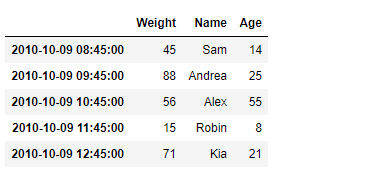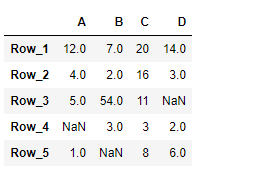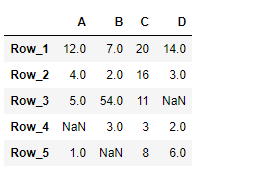Python| Pandas DataFrame.to_sparse
Pandas DataFrame 是一种二维大小可变的、潜在异构的表格数据结构,带有标记的轴(行和列)。算术运算在行标签和列标签上对齐。它可以被认为是 Series 对象的类 dict 容器。这是 Pandas 的主要数据结构。
Pandas DataFrame.to_sparse()函数转换为 SparseDataFrame。该函数实现了 DataFrame 的稀疏版本,这意味着与特定值匹配的任何数据都在表示中被省略。稀疏 DataFrame 允许更有效的存储。
Syntax: DataFrame.to_sparse(fill_value=None, kind=’block’)
Parameter :
fill_value : The specific value that should be omitted in the representation.
kind : {‘block’, ‘integer’}, default ‘block’
Returns : SparseDataFrame
示例 #1:使用DataFrame.to_sparse()函数将给定的 Dataframe 转换为 SparseDataFrame 以实现高效存储。
# importing pandas as pd
import pandas as pd
# Creating the DataFrame
df = pd.DataFrame({'Weight':[45, 88, 56, 15, 71],
'Name':['Sam', 'Andrea', 'Alex', 'Robin', 'Kia'],
'Age':[14, 25, 55, 8, 21]})
# Create the index
index_ = pd.date_range('2010-10-09 08:45', periods = 5, freq ='H')
# Set the index
df.index = index_
# Print the DataFrame
print(df)
输出 :

现在我们将使用DataFrame.to_sparse()函数将给定的数据帧转换为 SparseDataFrame。
# convert to SparseDataFrame
result = df.to_sparse()
# Print the result
print(result)
# Verify the result by checking the
# type of the object.
print(type(result))
输出 : 

正如我们在输出中看到的, DataFrame.to_sparse()函数已成功地将给定的数据帧转换为 SparseDataFrame 类型。示例 #2:使用DataFrame.to_sparse()函数将给定的 Dataframe 转换为 SparseDataFrame 以实现高效存储。
# importing pandas as pd
import pandas as pd
# Creating the DataFrame
df = pd.DataFrame({"A":[12, 4, 5, None, 1],
"B":[7, 2, 54, 3, None],
"C":[20, 16, 11, 3, 8],
"D":[14, 3, None, 2, 6]})
# Create the index
index_ = ['Row_1', 'Row_2', 'Row_3', 'Row_4', 'Row_5']
# Set the index
df.index = index_
# Print the DataFrame
print(df)
输出 : 
现在我们将使用DataFrame.to_sparse()函数将给定的数据帧转换为 SparseDataFrame。
# convert to SparseDataFrame
result = df.to_sparse()
# Print the result
print(result)
# Verify the result by checking the
# type of the object.
print(type(result))
输出 : 

正如我们在输出中看到的, DataFrame.to_sparse()函数已成功地将给定的数据帧转换为 SparseDataFrame 类型。